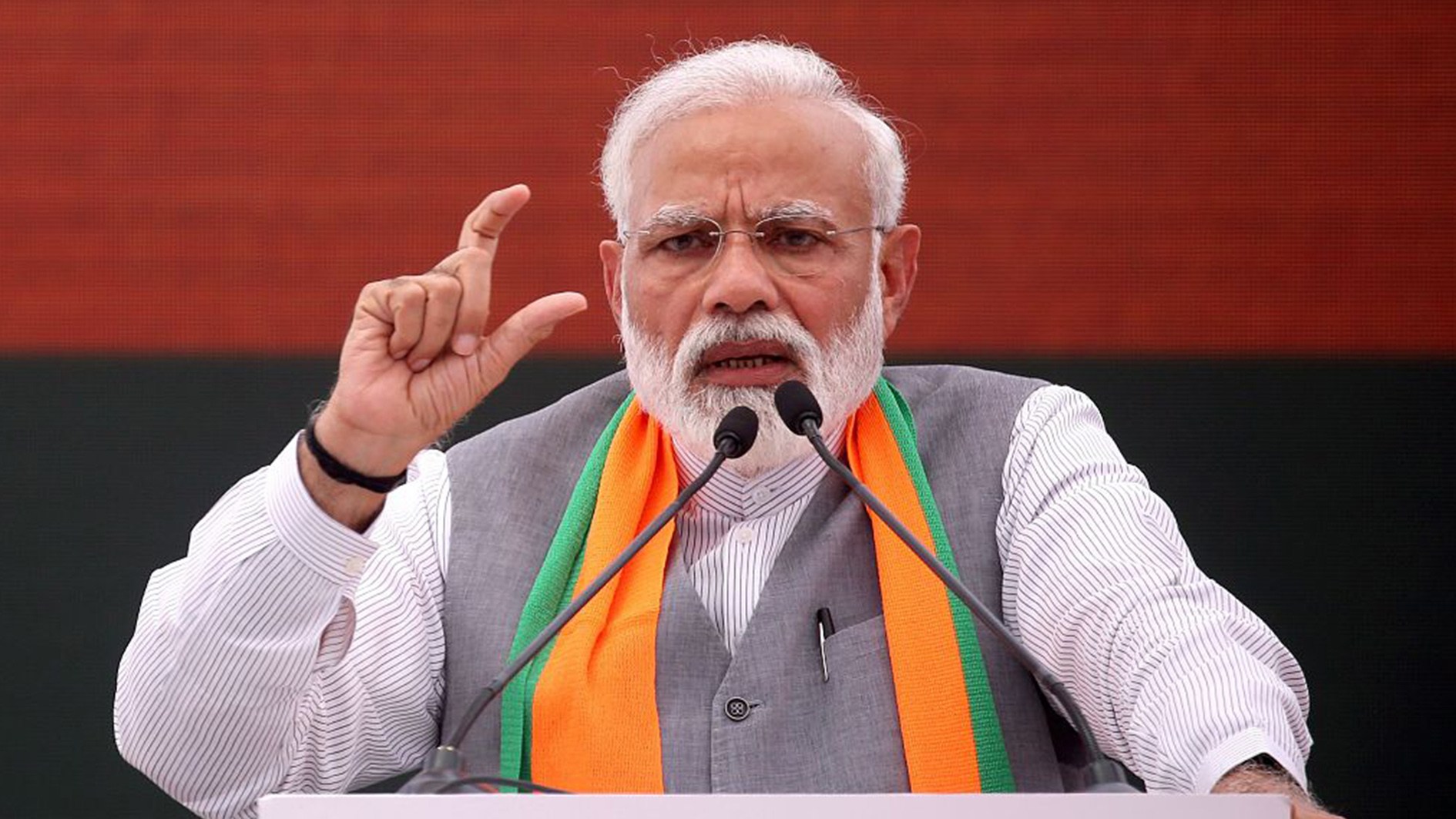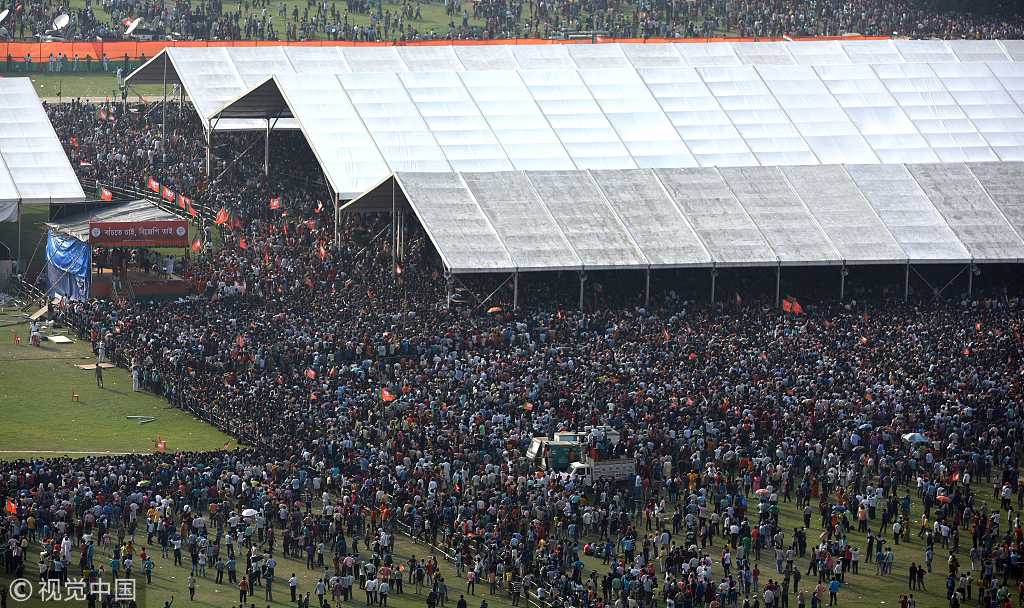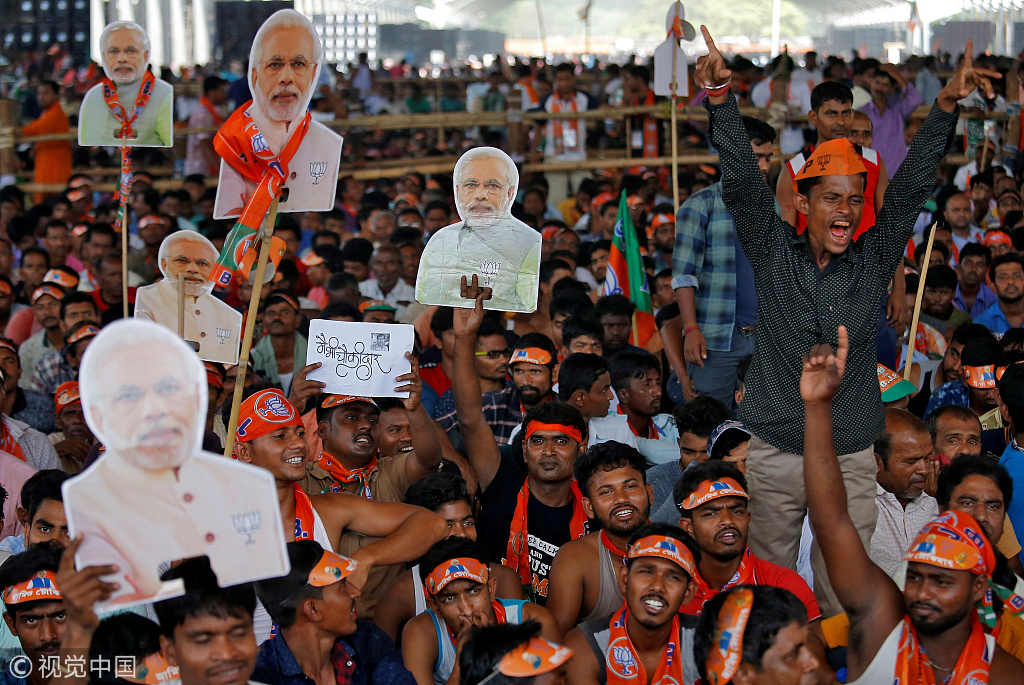
Asia Pacific
17:19, 10-Apr-2019
Indian elections: Decoding Modi's campaign strategy
Updated
10:52, 11-Apr-2019
Nayan Seth, Li Jingyi
03:13

Indian Prime Minister Narendra Modi rose to power promising "acche din" or "better days" for the people of the country. Five years on, he is seeking re-election on a plank of development and nationalism.
How has the Modi government performed in the last five years? Has the prime minister delivered? Why is the Indian prime minister focusing more on the issue of nationalism rather than development?
In the last five years, Modi's government has tried to carry out structural reforms including over 100 special schemes in the Indian economy, ranging from education, health care to taxation and infrastructure development. The prime minister managed to implement a common goods and services tax, or the GST, across the nation.
But many analysts say Modi's biggest achievement is India's foreign policy. Barring Pakistan, India has good relations with its neighbors, most notably China. In June last year, Modi and President Xi revived the Sino-Indian ties and since then, engagements between Asia's two economic powers have only deepened.

Supporters of Bhartiya Janata Party (BJP) gather for Prime Minister Narendra Modi's rally, Kolkata, April 3, 2019. /VCG Photo
Supporters of Bhartiya Janata Party (BJP) gather for Prime Minister Narendra Modi's rally, Kolkata, April 3, 2019. /VCG Photo
Under Modi, the ties between India and the Middle East have reached a new high, and some observers believe India is starting to have its voice better heard in the international arena.
Internal challenges
External factors aside, Modi faces many internal challenges and the biggest one is jobs. According to a government report which was leaked to the media, the unemployment rate is at a 45-year high. Last year, for instance, 19 million people applied for 63,000 vacancies in India's national railway authority.
The data indicates a deeper problem with the Indian economy, but looking at the bigger picture, Modi or any other future Indian leader is likely to grapple with the challenge of creating jobs for 1.3 billion people where half of the population is below 25 years old.

People hold cut-outs of Prime Minister Narendra Modi during an election campaign rally, Kolkata, April 3, 2019. /VCG Photo
People hold cut-outs of Prime Minister Narendra Modi during an election campaign rally, Kolkata, April 3, 2019. /VCG Photo
Next is the self-inflicted crisis of demonetization. In November 2016, over 85 percent of the country's cash currency was declared illegal, which economists say it led to widespread discontent and severely affected small traders and farmers, dependent on cash transactions.
Despite numerous relief programs by the government, farmer distress remains a big challenge. Over 300,000 farmers have committed suicide since 1995 due to rising debts. So is it fair to squarely blame Modi for most of the problems India faces today?
His supporters cite decades of mismanagement by the previous governments and high expectations of people when Modi won the election in 2014 on the promise of "fixing everything".
The actual question for Modi is: Will the voter again trust him, or will they punish his government for not fulfilling the "transformation dream"?

SITEMAP
Copyright © 2018 CGTN. Beijing ICP prepared NO.16065310-3
Copyright © 2018 CGTN. Beijing ICP prepared NO.16065310-3